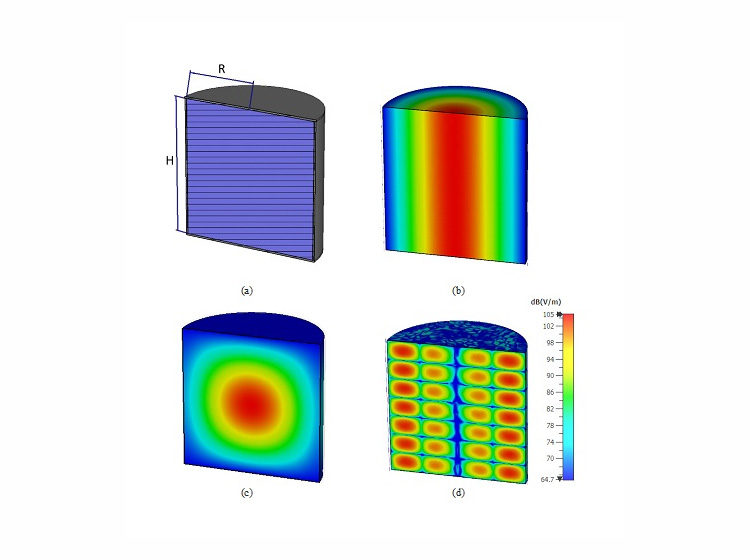The abundance of a widely available spectrum at a frequency band of around 60 GHz (mm-wave region) displays potential to support high data rate, short range wireless communications. This has led to an increased demand for cost effective solutions for the RF front end, such as antennas, phase shifters and filters. Preferably, these mm-wave devices need to be reconfigurable and compact.
Due to its voltage tunable dielectric property and relatively low loss at mm-wave frequencies, Liquid Crystals (LC) appear to be a suitable medium for developing a range of voltage controlled adaptive mm-wave devices. The dielectric constant of the LC, which has tensor form, can be controlled by an external electric or magnetic field. Some reconfigurable LC based mm-wave devices already reported in the literature are phase shifters, tunable antennas and adaptive reflect arrays . All these devices use nematic LCs. Nematic LCs, largely used in display technology, are liquid anisotropic materials that exhibit a rather large variation of relative permittivity when subjected to an external electric or magnetic field.
The choice of a nematic LC for a particular application depends on a number of factors. The most influential ones are the dielectric anisotropy, transition voltage, and switching voltage threshold. The value of the dielectric anisotropy () is of paramount importance as it directly determines the tunability/control range of an LC-based device.
The dielectric properties (dielectric constants and loss tangents) of nematic LCs can be determined by either the resonant method or by the broad-band method. Even though the resonant method offers high sensitivity and accurate results for dielectric constants, it has the disadvantages of being applicable to individual (spot) frequencies and of being difficult to extract the loss tangent accurately. We have characterized the unknown characteristics of several LC mixtures with both methods in our previous publications.
In this paper the dispersion characteristics of a top grounded CPW with an LC superstrate are investigated in the frequency range of 30-60 GHz, at different LC bias voltages using a broadband method. In this investigation, two nematic LC mixtures, namely E7 and MDA-00-3506, are used as the superstrate. Through measurement the dispersion properties (effective dielectric constants) of the CPW are extracted and they are compared to those obtained using a general finite element modeling developed earlier by the authors. The finite element modeling is comprehensive and can predict the local alignments of LC molecules and the wave propagation within an LC-based planar transmission line. The results from measurement and computer modeling are found to be in good agreement and in fact, they are close to within 5%.




Leave a Reply